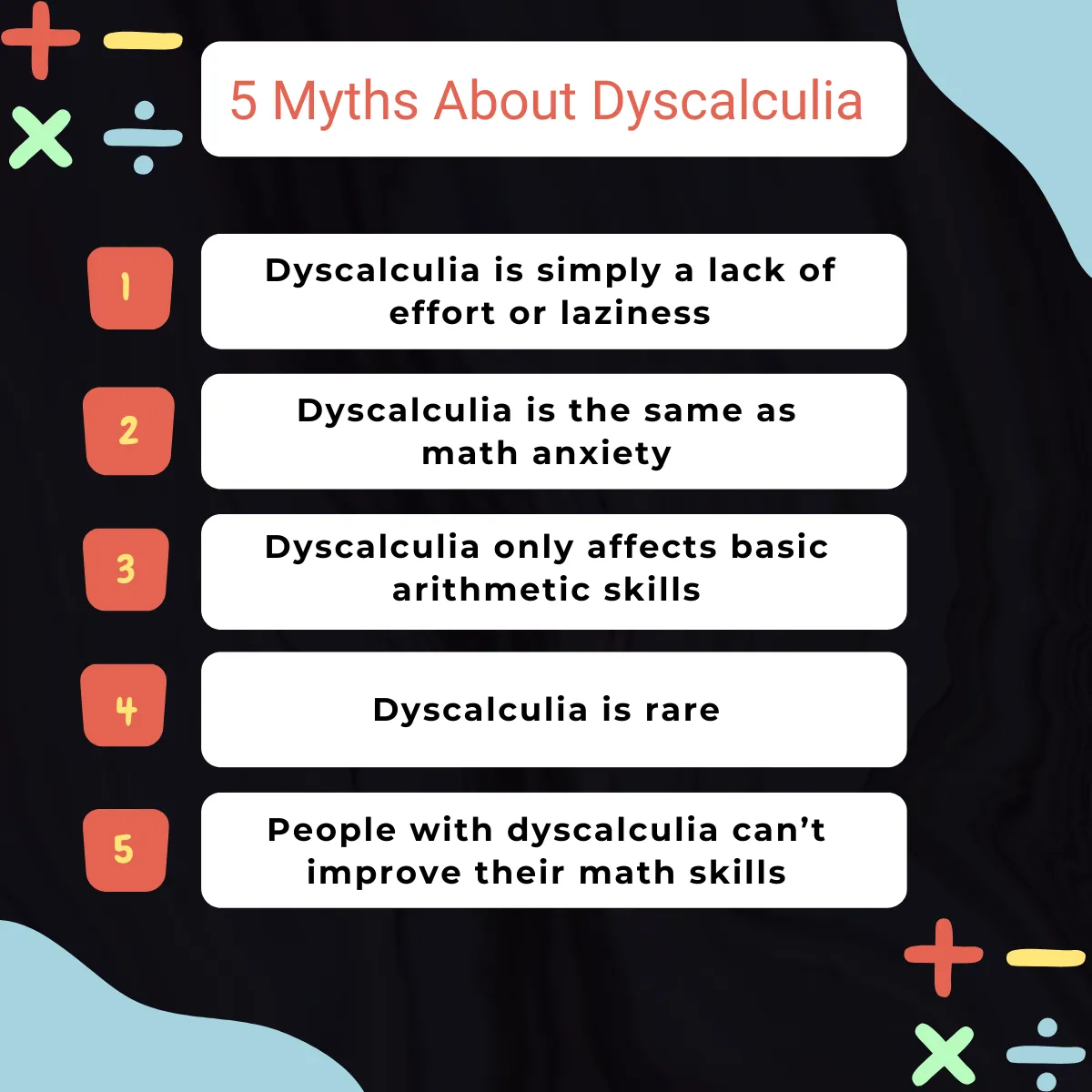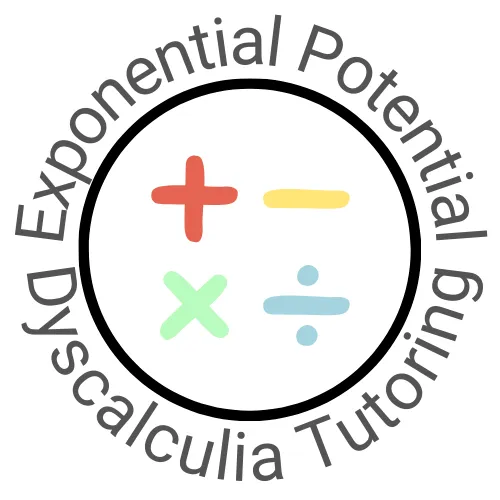Contact Us
Blog

Five Myths About Dyscalculia
“.“The only way to learn mathematics is to do mathematics.” ~Paul Halmos
What is Dyscalculia?
Dyscalculia is a learning disorder that specifically affects a person's ability to understand and work with numbers.
There are several myths associated with dyscalculia, and it's important to dispel these misconceptions to promote a better understanding of the condition.

Here are five common myths about dyscalculia:
1. Myth: Dyscalculia is simply a lack of effort or laziness.
· Fact: Dyscalculia is a neurological condition, not a result of laziness or lack of effort. Individuals with dyscalculia may struggle with numerical concepts despite putting in significant effort to learn and understand them.
2. Myth: Dyscalculia is the same as math anxiety.
· Fact: While math anxiety and dyscalculia can coexist, they are distinct conditions. Math anxiety is a general fear or apprehension about math, while dyscalculia is a specific learning disorder related to numerical processing.
3. Myth: Dyscalculia only affects basic arithmetic skills.
· Fact: Dyscalculia can impact various aspects of mathematical understanding, including number sense, spatial reasoning, and the ability to grasp mathematical concepts at different levels. It goes beyond basic arithmetic and can affect a person's overall mathematical proficiency.
4. Myth: Dyscalculia is rare.
· Fact: Dyscalculia is more common than often thought. It is estimated that about 5-7% of the population may have dyscalculia. However, the lack of awareness and understanding of the condition can contribute to underdiagnosis or misdiagnosis.
5. Myth: People with dyscalculia cannot improve their math skills.
· Fact: While individuals with dyscalculia may face challenges in math, appropriate support, interventions, and strategies can help improve their mathematical abilities. With targeted interventions and accommodations, individuals with dyscalculia can make progress and succeed in mathematical learning.


